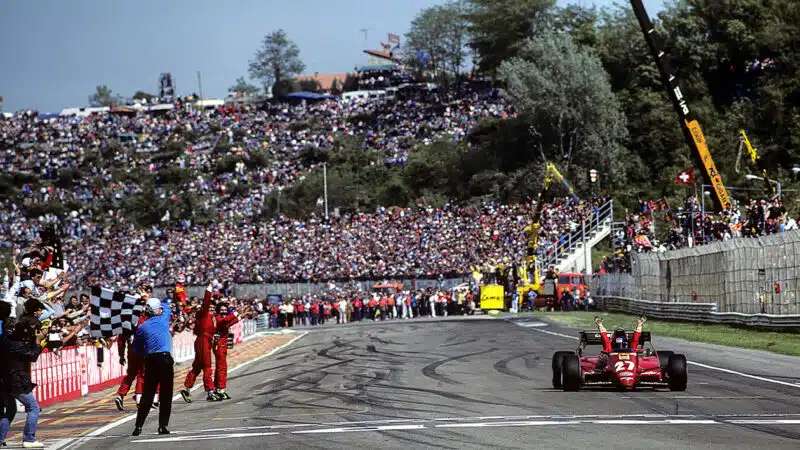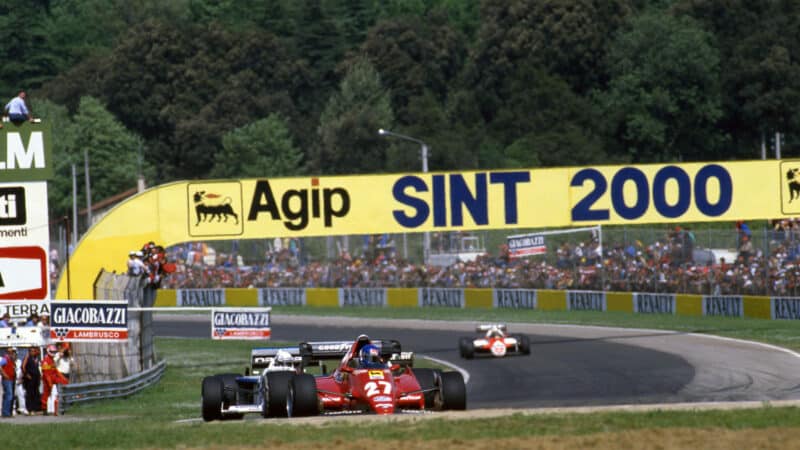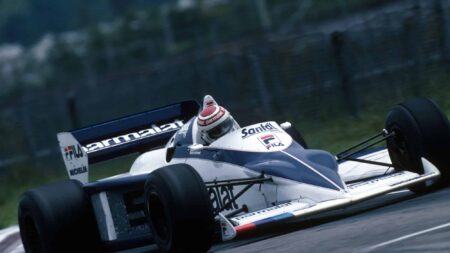“I qualified fifth in Imola. Nelson stalled on the grid and, by about lap six, I was leading. It’s always a good feeling when you lead a race, whether you are in Italy or not. But when you lead at the beginning, you never know if you’re going to finish; you can only really think about winning when you see the chequered flag.
“I had a very poor pitstop and dropped to second behind Tambay. I had to push very hard to catch him. But I caught him very quickly and, with five or six laps to go, overtook the Ferrari for the lead.
“Because I thought that I’d won the grand prix at that moment, I relaxed a little bit. Unfortunately, the asphalt was breaking up: it was very hot that day, and the track’s surface had just been laid. There was only one line because there were many, many small stones. I put my left-front tyre a little bit too wide in the second Minerali corner and I slid off as though I was on ice.
“The condition of the track played a part, though that’s no excuse because it was the same for everybody. But after pushing so hard, and then relaxing, I lost concentration. I was in the lead and everything felt easy… I had learned a harsh lesson: you need to concentrate until the last metre. The second I thought that I had won was when I had the problem.

Tambay celebrates his win – at Patrese’s expense
Paul-Henri Cahier/Getty Images
“I knew that I hod lost a big chance. When I climbed out of the car I was so absorbed in my own thoughts about the fact that I had lost the grand prix that I did not really care what was going on around me. It was only in the evening when I watched on TV that I realised what the fans had been doing. For them, it was Ferrari or nothing – although when I got some better results, I think they came on my side. A little bit. It was only when I won the grand prix there in 1990 that I could again have a good feeling with the Imola crowd.
“In the short term, that crash took away any chance for me to go for the championship. The team now put its efforts behind Nelson. The idea was that if we had to test something new on the engine, it was tested on my car, because Nelson was fighting for the title. The team had sacrificed one driver to help the other and I retired from a lot of grands prix because of that.”



